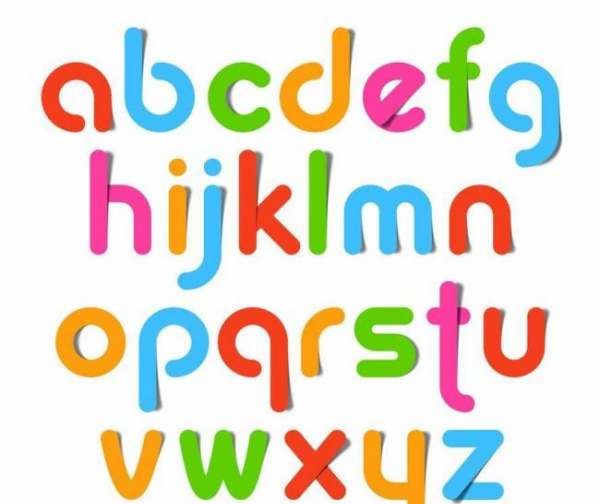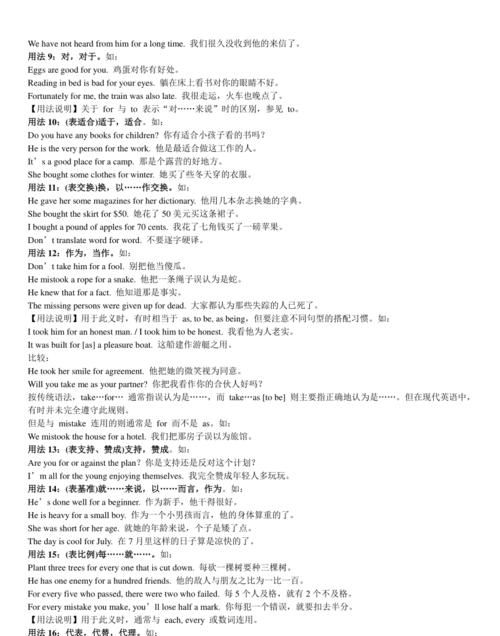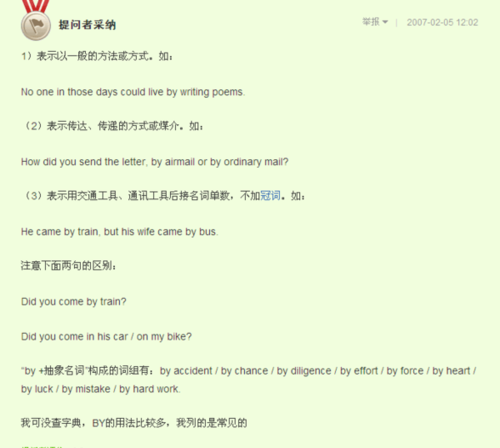本文目录
for和of的区别是什么
for和of引导的不定式结构的区别

不定式是一种非谓语动词,不能单独作谓语,因此没有语法上的主语。但由于不定式表示的是动作,在意义上可以有它的主体。我们称之为逻辑主语。
一、of 表从属关系
介词Of的用法
(1)所有关系
This is a picture of a classroom
(2)部分关系
a piece of paper
a cup of tea
a glass of water
a bottle of milk
What kind of football,American of Soccer?
(3)描写关系
a man of thirty 三十岁的人
a man of Shanghai 上海人
(4)承受动作
The exploitation of man by man.人对人的剥削.
(5)同位关系
It was a cold spring morning in the city of London in England.
(6)关于,对于
What do you think of Chinese food?
你觉得中国食品怎么样?
二、介词 for 的用法小结
(1)表示“当作、作为”.如:
I like some bread and milk for breakfast.
我喜欢把面包和牛奶作为早餐.
What will we have for supper?
我们晚餐吃什么?
(2)表示理由或原因,意为“因为、由于”.如:
Thank you for helping me with my English.
谢谢你帮我学习英语.
Thank you for your last letter.
谢谢你上次的来信.
Thank you for teaching us so well.
感谢你如此尽心地教我们.
(3)表示动作的对象或接受者,意为“给……”、“对…… (而言)”.如:
Let me pick it up for you.
让我为你捡起来.
Watching TV too much is bad for your health.
看电视太多有害于你的健康.
(4)表示时间、距离,意为“计、达”.如:
I usually do the running for an hour in the morning.
我早晨通常跑步一小时.
We will stay there for two days.
我们将在那里逗留两天.
(5)表示去向、目的,意为“向、往、取、买”等.如:
Let’s go for a walk.
我们出去散步吧.
I came here for my schoolbag.
我来这儿取书包.
I paid twenty yuan for the dictionary.
我花了20元买这本词典.
(6)表示所属关系或用途,意为“为、适于……的”.如:
It’s time for school.
到上学的时间了.
Here is a letter for you.
这儿有你的一封信.
英语中介词for和to的用法
for表示行为,目的,对象
at表示时间在某一刻,在某一点钟,在多少岁
in表示地点场所在...里?在...上?
of的原始概念是属于来自构成等

to和for的区别和用法
for 表原因、目的
of 表从属关系
介词of的用法
(1)所有关系
this is a picture of a classroom
(2)部分关系
a piece of paper
a cup of tea
a glass of water
a bottle of milk
what kind of football,american of soccer?
(3)描写关系
a man of thirty 三十岁的人
a man of shanghai 上海人
(4)承受动作
the exploitation of man by man.人对人的剥削。
(5)同位关系
it was a cold spring morning in the city of london inengland.
(6)关于,对于
what do you think of chinese food?你觉得中国食品怎么样?
介词 for 的用法小结
1. 表示“当作、作为”。如:
i like some bread and milk for breakfast. 我喜欢把面包和牛奶作为早餐。
what will we have for supper? 我们晚餐吃什么?
2. 表示理由或原因,意为“因为、由于”。如:
thank you for helping me with my english. 谢谢你帮我学习英语。

at和for的用法区别
on,at,in用法巧记
on,at,in这三个常用介词都可以表示时间和地点,但具体用法不同,多数学生对它们混淆不清。现在只要记住了口诀,就可避免at,on,in的种种误用。
1. on,in,at表示时间
on“在具体某一天”①
“当某时”,动名词, arrival,death前;early,late位句先②,用in一般“上”“下”“晚”;on用于天,in用于月、季、年③;限定三时in要变。④at是个时间点,“工作”“时刻”与“圣诞”⑤。at noon(night),in the day,习惯用语记心间。
注:①on表示在具体某一天及具体某一天的上午、下午和晚上。
例 On mother's Day, we should send flowers to our mother. 母亲节,我们应该送花给我们的母亲。
On my arrival home,I found he had gone already.当我到家时,我发现他已经走了。
② 当early,late用于句首修饰介词短语时,尽管表示具体某一天的上午、下午、晚上,都要用in,泛指一般的上、下午,晚上也用in 。
例 Early in the morning of National Day,I got up to catch the first bus to the zoo. 国庆节一清早,我便起床去赶到动物园的第一班公共汽车。
My father begins work at 8:00 in the morning and stops work at 4:00 in the afternoon. 我父亲上午8点上班,下午4点下班。
③于将来时态表示“过一段时间后” 及表示“在……期间” 和“在某个季节,某年、某月” 都用in。
例 I hear he’ll be back in a month.我听说他将于一个月后回来。
In the course of the last lesson in French,little Franz was listening to the master very attentively.在那最后一堂法语课中,小弗朗兹非常用心地听着老师讲。
Xiao Ming was born in December of 2004. 小明生于2004年12月。
④当 morning,afternoon,evening有前位定语或后置定语限定时,就不用in而用on。
例 on a hot (summer) noon 在一个炎热(夏天)的中午
on Monday morning 在星期一上午
on the morning of March 8th在3月8日上午
⑤ 表示某时某刻及在work,Christmas前用at。
例 We get up at eight o’clock. 我们8点起床。
My father are busily at work all day. 我父亲整天忙于工作。
In western countries children get present from their parents at Christmas. 在西方国家,孩子们在圣诞节得到父亲给的礼物。
to 表示目的 方向
for 译 为.... 后接名词
of 一般译成 ....的 与其后的名词 相当与形容词
例One of the legs of the table was broken.桌子的一条腿断了
the是首先修饰名词的,用法有
1.第二次提到某物 This is a book.The book is mine.
2.谈话双方所知道的事物Open the window ,please.
3.世界上独一无二的事物the sun,the moon,the earth
4.方向The sun rises in the east.
5.江河湖海the Yellow River the West lake
6.乐器the piano,the violin
7.一个名词被一个介词词组修饰,把介词词组放在名词的后面,the放在名词的前面.The box on the desk is hers.The girl in red is her sister.
8.形容词的最高级和序数词前February is the second month of the year
The Changjiang River is the longest river in China.
9.用于单数可数名词前表示一类人和事物.The apple is a kind of fruit.
10.用在由普通名词构成的专有名词前the Summer Palace
11.用在名词化的形容词前表示一类人和事物the rich ,the poor,the old
12.用在姓氏复数前,表示一家人或一个家族the Smiths
13.the+比较级+the+比较级表示越来越.The more we get together,the happier we will be.
不用有1第一次提到某物
2,谈话人所不知道的事物
3,表示数量单位
4,感叹句
免冠的情况(不用the ,a ,an )
代词限定名词前
复数名词表泛指
学科球类三餐饭
颜色,语种及国名,称呼,习语及头衔

以上就是关于for in 和 for of的区别详解 ,for和of的区别是什么的全部内容,以及for in 和 for of的区别详解 的相关内容,希望能够帮到您。
